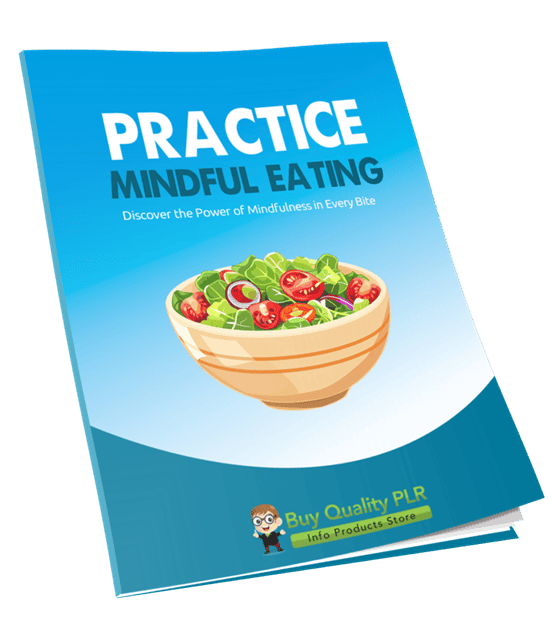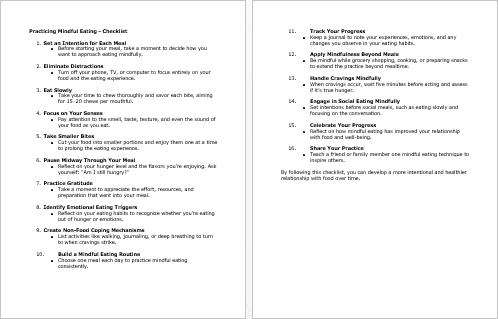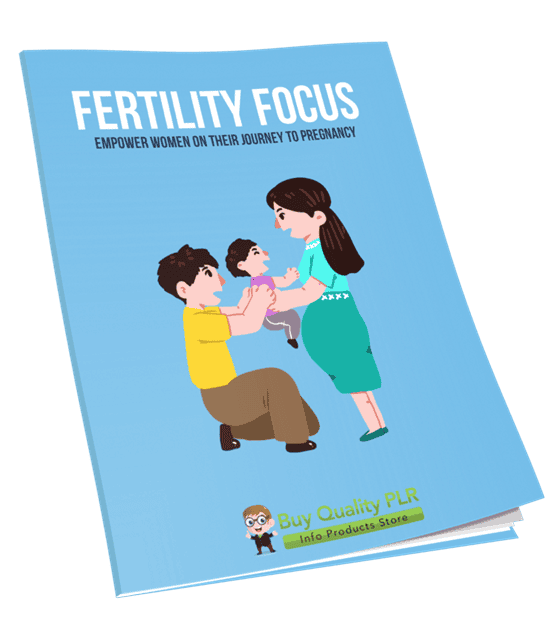
Practice Mindful Eating PLR Course 27k Words
in Diet PLR , Dieting PLR Ebooks , Health PLR , Health PLR eBooks , Healthy Eating PLR Ebooks , PLR Checklists , PLR eBooks , PLR eCourses , PLR List Building Reports , Premium PLR , Premium PLR eBooks , Premium PLR Reports , Premium White Label Brandable PLR Coaching Courses , Private Label Rights ProductsChoose Your Desired Option(s)
has been added to your cart!
have been added to your cart!
#mindfuleating #healthyhabits #nutritionplr #wellnessplr #plrcourse #healthcontent #mindfulness #selfhelpcontent #plrcontent
Practice Mindful Eating PLR Course – Transform Your Relationship with Food
Discover the Power of Mindfulness in Every Bite
Do you find yourself eating on autopilot, snacking out of stress, or finishing meals without really noticing them? Mindless eating is common in our fast-paced lives—but it can lead to overeating, poor digestion, and an unhealthy relationship with food.
The Practice Mindful Eating PLR Course is a comprehensive, step-by-step training program that teaches the art and science of mindful eating. With 25,482 words of expertly structured content, this PLR course provides everything you need to educate, guide, or coach others on mindful eating.
Whether you’re a nutritionist, health coach, wellness blogger, or entrepreneur, this ready-to-use course offers editable content for digital products, workshops, membership sites, or online programs.
Presenting…
Practice Mindful Eating PLR Course 27k Words
Why Mindful Eating Matters
Mindful eating is more than just slowing down while you eat. It’s about developing a healthy relationship with food, tuning into your body’s hunger and fullness cues, and cultivating a positive mindset toward meals.
With this course, learners will:
- Reduce overeating by recognizing true hunger signals
- Improve digestion and nutrient absorption
- Lower stress around meals and break emotional eating cycles
- Enhance enjoyment and satisfaction from every bite
- Develop lasting habits that support a healthy lifestyle
Course Structure: Five Detailed Modules
The course is organized into five comprehensive modules, each containing four actionable steps, with practical activities to engage learners and foster real change.
Module 1: Understanding Mindful Eating
Step 1: What Is Mindful Eating?
Explore the concept of mindful eating and learn how awareness can transform your relationship with food.
Activity: Reflect on your current eating habits. Are your meals rushed, emotional, or distracted?
Step 2: Why Does Mindful Eating Matter?
Understand how mindful eating improves digestion, prevents overeating, and promotes a healthier mindset.
Activity: Journal three ways mindless eating has impacted your life.
Step 3: The Mindful Eating Mindset
Learn the core principles of mindful eating: awareness, non-judgment, and gratitude.
Activity: Write down the journey of your next meal—from farm or market to plate.
Step 4: Setting Your Intention
Establish a clear goal for your mindful eating practice, e.g., “I will eat slowly and honor my hunger cues.”
Activity: Journal your intention daily and revisit it at each meal.
Benefits: Learners gain clarity on mindful eating and set the stage for lasting habits.
Module 2: Preparing for Mindful Eating
Step 1: Create a Distraction-Free Environment
Learn how to minimize distractions like TV, phones, or work while eating.
Activity: Set up a calming eating space—add a plant, soft lighting, or a pleasant table setting.
Step 2: Listen to Your Body
Tune into physical hunger and fullness cues, distinguishing between emotional and actual hunger.
Activity: Before meals, ask: “Am I truly hungry, or just bored or stressed?”
Step 3: Plan Balanced Meals
Create meals that include proteins, vegetables, healthy fats, and complex carbs.
Activity: Plan your next meal with variety and nutrient balance in mind.
Step 4: Practice the Pause
Take a moment before eating to breathe, focus, and appreciate your food.
Activity: Practice three deep breaths before your next meal.
Benefits: Learners develop the foundational practices that support successful mindful eating.
Module 3: Eating Mindfully in Action
Step 1: Engage Your Senses
Fully experience your food using sight, smell, taste, touch, and sound.
Activity: Take a single bite and describe its texture, flavor, and aroma.
Step 2: Chew Slowly
Chewing thoroughly aids digestion and enhances mindfulness.
Activity: Count 15–20 chews per bite. Notice the difference.
Step 3: Take Small Bites
Smaller bites increase satisfaction and prevent overeating.
Activity: Practice taking smaller bites and observe the impact on satiety.
Step 4: Reflect While Eating
Pause midway through meals to assess hunger and enjoyment.
Activity: Journal your thoughts mid-meal to track progress.
Benefits: Learners cultivate awareness while eating, improving digestion, satisfaction, and portion control.
Module 4: Overcoming Challenges
Step 1: Managing Emotional Eating
Identify emotional hunger and learn healthy coping strategies.
Activity: List non-food ways to manage emotions, such as walking, journaling, or meditation.
Step 2: Dealing with Cravings
Learn to sit with cravings without giving in impulsively.
Activity: Wait five minutes during a craving; evaluate if you are physically hungry.
Step 3: Staying Consistent
Develop small, daily habits for long-term mindful eating.
Activity: Pick one meal each day for a mindful eating focus over a week.
Step 4: Navigating Social Situations
Practice mindfulness while eating in social settings without feeling awkward.
Activity: Set an intention before social meals, e.g., “I will eat slowly and enjoy the conversation.”
Benefits: Learners gain practical strategies for emotional triggers, cravings, and real-world situations.
Module 5: Sustaining a Mindful Eating Practice
Step 1: Reflect on Your Journey
Celebrate progress and identify areas for improvement.
Activity: Journal wins and lessons learned throughout the course.
Step 2: Build a Routine
Incorporate mindful eating into daily life, starting with one meal per day.
Activity: Choose a consistent time for your mindful practice.
Step 3: Stay Mindful Beyond Meals
Apply mindfulness to grocery shopping, cooking, and snacking.
Activity: Make a mindful grocery list and avoid distractions during shopping.
Step 4: Share Your Practice
Inspire others by teaching or sharing mindful eating techniques.
Activity: Show a friend one mindful eating technique and discuss your experience.
Benefits: Learners integrate mindfulness into all food-related habits, promoting lifelong healthy eating practices.
Bonus Materials
- Checklist: 353-word actionable guide to track mindful eating habits
- FAQs: 1,017-word resource answering common questions
- Ready-to-Use Sales Page: 709-word copy for marketing and promotion
Who Can Benefit
- Nutritionists & Health Coaches: Create programs, workshops, or online courses.
- Wellness Bloggers: Sell as eBooks, guides, or email courses.
- Personal Trainers & Fitness Coaches: Combine with fitness programs for holistic wellness.
- Individuals Seeking Food Awareness: Build a healthier relationship with food.
How to Use and Profit from This PLR Course
- Sell the entire course as a digital product.
- Split into modules or guides ($10–$20 each).
- Bundle with other PLR content for premium packages ($47–$97).
- Launch a membership site for recurring revenue.
- Convert into audio, video, or interactive courses.
- Use excerpts as lead magnets to grow your email list.
- Offer workshops or coaching sessions based on the content.
Licensing & Usage Rights
Permissions:
- Sell, teach, or repurpose content as-is or with edits.
- Modify 75% to claim copyright.
- Use in eBooks, courses, newsletters, or coaching programs.
Restrictions:
- Cannot transfer PLR rights to customers.
- Maximum affiliate payout: 75%.
- Cannot give away full content for free.
- Cannot bundle without additional purchase.
Why Choose Practice Mindful Eating PLR Course
- 25,482 words of structured content ready for immediate use
- Five modules with step-by-step actionable strategies
- Includes checklist, FAQs, and pre-written sales page
- Practical exercises and journaling activities to engage learners
- Perfect for monetization as a digital product, workshop, or coaching program
Invest in the Practice Mindful Eating PLR Course today and provide your audience with a structured, actionable roadmap to transform their relationship with food. This course is ready-to-use, editable, and profitable, making it an ideal addition to your digital product lineup.
has been added to your cart!
have been added to your cart!
Here A Sample of Practice Mindful Eating PLR Course
This course will guide you step-by-step on how to bring mindfulness into your eating habits, helping you build a healthier relationship with food. Let’s break it into five easy-to-follow modules with clear steps.
Module 1: Understanding Mindful Eating
Let’s start with the basics and understand what mindful eating is all about.
Step 1: What Is Mindful Eating?
Mindful eating is a practice that combines mindfulness—the art of being present and aware in the moment—with the everyday act of eating. It is about truly experiencing and savoring the food you eat, listening to your body’s natural hunger and fullness signals, and building a healthy, intentional relationship with food. This step will guide you through understanding the concept and exploring its profound impact on your overall well-being.
Understanding Mindful Eating
Mindful eating encourages you to:
- Pay Attention to Your Food: This involves noticing the taste, texture, aroma, and appearance of what you’re eating. By doing so, you enhance the sensory experience of eating and develop a deeper appreciation for your meals.
- Be Present While Eating: Instead of rushing or multitasking during meals, mindful eating asks you to eat without distractions like TV, phones, or work. It’s about focusing solely on the act of eating.
- Listen to Your Body: This means tuning into your physical cues of hunger and fullness rather than eating based on external triggers, like the time of day or emotional stress.
- Cultivate a Non-Judgmental Attitude: Mindful eating is not about guilt or labeling foods as “good” or “bad.” It’s about observing your thoughts and feelings around food without criticism.
How Mindful Eating Helps You
Mindful eating can have transformative effects on both your physical and emotional well-being. Here’s how:
- Improved Digestion: Eating slowly and attentively allows your digestive system to function more efficiently.
- Reduced Overeating: By recognizing when you’re truly full, you can prevent consuming more than your body needs.
- Stress Reduction: The act of slowing down during meals can lower cortisol levels and create a more relaxed state.
- Healthier Food Choices: By being mindful, you become more attuned to the foods that nourish your body and those that don’t.
For example, when you eat mindlessly—rushing through a meal or snacking while distracted—you may not even notice how much you’ve eaten. Mindful eating shifts this dynamic, helping you savor your food and make intentional choices.
Activity: Reflect on Your Current Eating Habits
This reflective exercise will help you understand where you currently stand in terms of mindful eating and identify areas to improve. Take a moment to ask yourself the following questions:
- Are Your Meals Often Rushed?
- Think about how quickly you eat. Do you feel like you barely have time to chew before swallowing? Do you find yourself hurrying through meals because of work, family, or other commitments?
- Think about how quickly you eat. Do you feel like you barely have time to chew before swallowing? Do you find yourself hurrying through meals because of work, family, or other commitments?
- Do You Eat Emotionally?
- Consider whether you eat in response to emotions rather than hunger. For instance, do you eat when you’re stressed, bored, or sad? Reflect on how often emotions dictate your food choices.
- Consider whether you eat in response to emotions rather than hunger. For instance, do you eat when you’re stressed, bored, or sad? Reflect on how often emotions dictate your food choices.
- Are You Distracted While Eating?
- Reflect on whether you eat in front of a screen, while driving, or doing other activities. Do you notice the flavors and textures of your food, or do you barely remember what you ate?
- Reflect on whether you eat in front of a screen, while driving, or doing other activities. Do you notice the flavors and textures of your food, or do you barely remember what you ate?
- How Aware Are You of Your Hunger and Fullness Signals?
- Think about whether you eat only when you’re hungry or if you eat out of habit, social pressure, or because “it’s time” to eat. Are you able to stop eating when you’re full?
Step-by-Step Instructions for the Activity
- Set Aside 10–15 Minutes for Reflection: Find a quiet place where you won’t be interrupted. Grab a notebook or open a digital note-taking app to jot down your thoughts.
- Answer the Reflection Questions: Write your honest responses to the questions listed above. Be detailed—this is for your self-awareness, so there’s no need to filter your answers. For example:
- “I often eat lunch in front of my computer while working. I rarely notice what I’m eating and usually finish my food too quickly.”
- “I tend to snack on chips or sweets when I’m stressed. It makes me feel better temporarily, but later I feel guilty.”
- Analyze Your Patterns: After answering the questions, look for common themes or patterns. Are your eating habits heavily influenced by stress or distractions? Are you rushing through meals without truly tasting them?
- Identify One Area to Focus On: Choose one aspect of your eating habits to work on in the upcoming week. For instance:
- If you’re often distracted, commit to eating one meal a day without any screens or interruptions.
- If you rush through meals, make a conscious effort to slow down and chew your food thoroughly.
Key Takeaways
- Mindful eating is about being present and aware while eating, free from distractions and judgment.
- It helps you connect with your body’s hunger and fullness signals, make healthier food choices, and reduce emotional or distracted eating habits.
- Reflecting on your current habits is the first step toward adopting a mindful approach.
By completing this step, you’ve laid the foundation for practicing mindful eating. Keep your notes handy—they’ll serve as a valuable reference throughout the course.
Step 2: Why Does Mindful Eating Matter?
Mindful eating goes far beyond savoring your meals—it’s a transformative approach to how you view and interact with food. This step focuses on the “why” behind the practice, helping you understand its deeper impact on your body, mind, and overall well-being. By examining the benefits, you’ll gain the motivation needed to commit to this life-changing habit.
The Importance of Mindful Eating
Mindful eating is essential because it tackles the root causes of unhealthy eating habits and supports a healthier relationship with food. Here’s how:
- Improves Digestion:
Eating slowly and chewing thoroughly signals your digestive system to work more effectively. This allows your body to properly break down food, absorb nutrients, and avoid issues like bloating or indigestion. - Reduces Overeating:
When you eat mindlessly, your brain struggles to register fullness, leading to overeating. Mindful eating encourages you to tune into your body’s natural signals, so you stop eating when you’re satisfied rather than stuffed. - Promotes a Healthier Mindset Toward Food:
Many people develop guilt or anxiety around food, especially when indulging. Mindful eating helps shift this mindset by focusing on the pleasure and nourishment food provides, without judgment. - Fosters Long-Term Wellness:
Mindful eating lays the foundation for sustainable health practices. By being present during meals, you’re more likely to choose nutritious foods, recognize unhealthy patterns, and maintain a balanced diet over time.
Why Mindless Eating Is a Problem
Mindless eating occurs when we eat without full awareness—whether due to distractions, emotional triggers, or sheer habit. Here are some common negative effects:
- Overeating and Weight Gain:
Consuming food while distracted (e.g., watching TV or scrolling on your phone) often leads to eating more than necessary. This disrupts your body’s natural hunger and fullness cues. - Emotional Dependence on Food:
Stress, sadness, or boredom can lead to emotional eating, where food becomes a coping mechanism rather than a source of nourishment. - Lack of Satisfaction:
When you eat mindlessly, you may not fully enjoy your meals, which can leave you feeling unsatisfied and craving more.
Step-by-Step Benefits Breakdown
- Physical Benefits:
- Improved digestion means fewer stomach issues, better nutrient absorption, and overall physical comfort after meals.
- Preventing overeating reduces the risk of obesity, diabetes, and heart disease.
- Mental Benefits:
- Mindful eating reduces anxiety around food, allowing you to enjoy meals without guilt or stress.
- It improves focus and mindfulness, extending to other areas of your life.
- Emotional Benefits:
- By addressing emotional eating habits, you can better manage stress and develop healthier coping mechanisms.
- Practical Benefits:
- Mindful eating helps you save money by reducing waste and over-purchasing food.
- You gain a deeper appreciation for your meals, which can even enhance your culinary skills over time.
Activity: Reflect on the Impact of Mindless Eating
This activity is designed to help you connect the dots between mindless eating habits and their effects on your life. Take 10–15 minutes to reflect on the following exercise.
Instructions:
- Find a Quiet Space:
Sit somewhere comfortable with a notebook or digital device to write down your thoughts. - Think About Times You Ate Mindlessly:
Recall moments when you ate while distracted, emotionally, or out of habit. Be specific and honest—this isn’t about judgment but understanding. For example:- “I often snack on chips while watching TV, and I don’t realize I’ve finished the bag until it’s empty.”
- “When I’m stressed, I crave sweets and eat quickly without enjoying them.”
- Write Down Three Ways It Has Impacted You:
Reflect on how mindless eating has affected your physical, mental, or emotional health. Use these prompts to guide you:- Physical Impact: Did it lead to weight gain, digestion issues, or fatigue?
- Emotional Impact: Did it create feelings of guilt, regret, or emotional dependence on food?
- Practical Impact: Did it result in wasted food, overspending, or other inefficiencies?
- Physical Impact: Did it lead to weight gain, digestion issues, or fatigue?
Example responses might include:
- “Mindless eating has made me feel bloated after meals because I eat too fast.”
- “I’ve developed a habit of snacking late at night, which makes it hard to sleep.”
- “I spend too much money on snacks because I eat out of boredom, not hunger.”
- Analyze and Reflect:
After listing your points, take a moment to identify patterns or recurring themes. This step will help you see where mindful eating could make a meaningful difference in your life.
Key Takeaways
- Mindful eating matters because it improves digestion, prevents overeating, and helps develop a healthier mindset toward food.
- Mindless eating, on the other hand, can lead to physical discomfort, emotional stress, and practical challenges like wasted resources.
- Reflecting on your own habits provides clarity on how mindless eating has impacted your life and highlights areas for growth.
By completing this step and activity, you’ve uncovered the “why” behind mindful eating. This understanding will serve as a powerful motivator as you move forward in your journey. Keep your reflections as a reminder of the positive change you’re striving for.
Step 3: The Mindful Eating Mindset
Developing the mindful eating mindset involves adopting three core principles: awareness, non-judgment, and gratitude for food. These principles transform the way you experience meals, helping you connect deeply with your body, your food, and the journey it takes to nourish you. In this step, we’ll explore these principles in detail and provide a practical activity to put them into practice.
The Three Core Principles of the Mindful Eating Mindset
- Awareness:
Awareness is at the heart of mindful eating. It means being fully present during meals, paying attention to the colors, textures, flavors, and aromas of your food. It also involves recognizing your body’s hunger and fullness signals without distractions.- Ask yourself: Are you truly hungry, or are you eating out of boredom, stress, or habit?
- Notice the sensory experience of each bite—how does the food taste and feel in your mouth?
- Non-Judgment:
Practicing non-judgment means letting go of guilt, shame, or rigid rules about eating. Food is not inherently “good” or “bad.” Mindful eating encourages a neutral, curious perspective that focuses on how food makes you feel, rather than labeling your choices.- Example: Instead of criticizing yourself for eating dessert, observe how it tastes and whether it satisfies your craving.
- Example: Instead of criticizing yourself for eating dessert, observe how it tastes and whether it satisfies your craving.
- Gratitude:
Gratitude helps you cultivate a sense of appreciation for your meals and the effort involved in bringing food to your plate. Recognizing the contributions of farmers, workers, cooks, and even nature fosters a deeper connection with your food.- Reflect on how food sustains you and how fortunate you are to have access to it.
Step-by-Step Guide to Cultivating the Mindful Eating Mindset
- Start Each Meal with a Pause:
Before diving into your meal, take a moment to pause. Close your eyes, take a deep breath, and center yourself. This simple act sets the tone for mindful eating by transitioning your focus to the present moment. - Engage Your Senses Fully:
Observe the food in front of you. Notice its appearance—colors, shapes, and presentation. Smell its aroma, and consider how it might taste. When you take your first bite, chew slowly and concentrate on the texture and flavor.- Pro Tip: If possible, avoid distractions such as screens or multitasking during meals.
- Pro Tip: If possible, avoid distractions such as screens or multitasking during meals.
- Acknowledge Thoughts Without Judgment:
As you eat, thoughts or emotions may arise. You might think, “I shouldn’t have this,” or “I deserve this treat.” Instead of judging these thoughts, acknowledge them and gently bring your focus back to the present experience of eating.- Tip: Use affirming phrases like, “I’m listening to my body’s needs” to reinforce positive habits.
- Tip: Use affirming phrases like, “I’m listening to my body’s needs” to reinforce positive habits.
- End with Reflection:
After finishing your meal, reflect on how you feel. Are you satisfied? Energized? Overfull? Use this awareness to guide your eating habits in the future.
Activity: Practice Gratitude for Your Food
This activity is designed to deepen your sense of gratitude and connection with your meals. Spend 10–15 minutes reflecting on the journey your next meal took to reach you.
Instructions:
- Prepare for Reflection:
Choose a meal you’re about to eat or a recent meal you enjoyed. Have a notebook or digital device ready to write down your thoughts. - Trace the Journey of Your Food:
Think about the steps involved in bringing your food to your plate. Use these prompts to guide your reflection:- Who planted, grew, or harvested the ingredients?
- What role did nature play in producing the food (e.g., sunlight, rain, soil)?
- How did the food get to you (e.g., transportation, grocery stores, or markets)?
- Did someone prepare or cook the meal?
- Write Down Your Reflections:
Create a list or short paragraph describing the people, processes, and natural elements involved. For example:- “The bread in my sandwich came from wheat grown by farmers. It was processed, packaged, and delivered to the grocery store by a supply chain of workers. The vegetables were grown in a local farm, harvested by hand, and sold at the market. My meal wouldn’t exist without the efforts of these people and the contributions of sunlight and soil.”
- “The bread in my sandwich came from wheat grown by farmers. It was processed, packaged, and delivered to the grocery store by a supply chain of workers. The vegetables were grown in a local farm, harvested by hand, and sold at the market. My meal wouldn’t exist without the efforts of these people and the contributions of sunlight and soil.”
- Express Gratitude:
End your reflection by writing a statement of gratitude. This could be as simple as, “I’m grateful for the farmers, workers, and natural elements that made this meal possible.”
Why Gratitude Matters
- Enhances Mindfulness: Gratitude encourages you to slow down and fully appreciate the effort and resources behind your food.
- Builds a Positive Relationship with Food: By focusing on gratitude, you shift your mindset from guilt or stress to appreciation and enjoyment.
- Promotes Global Awareness: Reflecting on food’s journey fosters an understanding of how interconnected we are with others and the environment.
Key Takeaways
- The mindful eating mindset is built on awareness, non-judgment, and gratitude.
- Awareness helps you connect with your body’s signals and the sensory experience of eating.
- Non-judgment allows you to enjoy food without guilt or criticism, focusing on how it nourishes you.
- Gratitude fosters a deeper appreciation for food and the effort involved in its journey.
By practicing gratitude for your meals, you’ll strengthen your mindful eating habits and develop a greater sense of connection with the world around you. Carry this mindset forward into your daily life, and notice how it transforms your relationship with food.
Step 4: Setting Your Intention
Intentions are powerful tools for creating lasting change in your eating habits. By consciously setting an intention, you give yourself a clear focus and purpose for practicing mindful eating. This step will guide you in understanding the importance of intentions, how to set one effectively, and how to make it a part of your daily routine.
The Power of Setting Intentions
An intention is not a rigid rule or a strict goal but a meaningful commitment to yourself. It’s about creating a mindful approach to eating that aligns with your values and well-being. Unlike goals, which are outcome-focused, intentions are process-focused.
For example:
- Goal: “I want to lose 5 pounds in a month.”
- Intention: “I want to eat slower and listen to my hunger cues.”
Intentions help you stay present, adaptable, and focused on your long-term relationship with food rather than short-term results.
Step-by-Step Guide to Setting Your Intention
- Reflect on Your Eating Habits and Challenges:
Take time to think about your current relationship with food. What areas would you like to improve?- Do you eat too quickly without savoring your food?
- Do you find yourself eating out of stress, boredom, or emotion rather than hunger?
- Are you disconnected from your body’s hunger and fullness signals?
Example Reflection:
- “I often eat while watching TV, and I’m not aware of how much I consume.”
- “I feel guilty about overeating, which makes me avoid paying attention to my meals.”
- Identify a Clear and Achievable Intention:
Based on your reflection, set a specific and realistic intention. Use language that is positive and encouraging.- Examples of Intentions:
- “I want to eat slowly and enjoy every bite.”
- “I want to recognize when I’m full and stop eating at that point.”
- “I want to choose meals that nourish my body and make me feel good.”
- Examples of Intentions:
Pro Tip: Avoid setting overly broad intentions like “I want to eat better.” Instead, focus on actionable behaviors that bring mindfulness into your eating.
- Write Your Intention Down:
Writing solidifies your intention and makes it feel more tangible. It serves as a reminder of your commitment to yourself.- Use affirming language that motivates you, such as:
- “I commit to slowing down during meals and truly enjoying my food.”
- “I will listen to my body’s signals and honor its needs.”
- Use affirming language that motivates you, such as:
- Revisit Your Intention Daily:
To make your intention part of your routine, review it each day—ideally before meals or as part of a morning ritual. Consistent reflection helps reinforce your commitment and adapt your intention if needed.- Place your written intention somewhere visible, such as on your desk, fridge, or phone.
Activity: Journal Your Intention
Journaling is an excellent way to internalize your intention and track your progress over time. This activity will help you clarify your intention and keep it at the forefront of your mindful eating practice.
Instructions:
- Create a Dedicated Space for Journaling:
Use a notebook, digital app, or even sticky notes to write your thoughts. Choose a format that feels comfortable and accessible to you. - Write Down Your Intention:
Begin by clearly stating your mindful eating intention. Use the following prompts to guide your journaling:- What behavior or habit do I want to change?
- How do I want to feel during and after meals?
- Why is this intention important to me?
Example Journal Entry:
- “My intention is to eat slower and savor each bite. I want to feel more connected to my meals and enjoy the experience of eating. This is important to me because I want to reduce stress eating and build a healthier relationship with food.”
- Reflect on Your Intention Daily:
At the start or end of each day, revisit your journal to reflect on how your intention influenced your eating habits. Answer these questions:- Did I practice my intention today? If yes, how did it feel?
- If I struggled, what challenges came up? How can I address them tomorrow?
- Celebrate Progress and Adjust If Needed:
Acknowledge your efforts and be kind to yourself if you face challenges. Intentions are meant to guide you, not to pressure or restrict you. Adjust your intention as needed to stay aligned with your goals and mindset.
Why Setting an Intention Matters
- Clarity and Focus: Intentions help you prioritize mindful eating in a busy world filled with distractions.
- Motivation: Revisiting your intention reminds you of why this practice matters to you, keeping you motivated to continue.
- Flexibility: Unlike rigid goals, intentions are adaptable and can evolve with your journey.
- Mindful Living: Setting an intention encourages mindfulness beyond meals, influencing other areas of your life.
Key Takeaways
- Reflect on your eating habits and identify specific areas for improvement.
- Set a clear, actionable intention that aligns with your goals and values.
- Write your intention down and revisit it daily to reinforce your commitment.
- Use journaling as a tool to track your progress, celebrate successes, and adjust as needed.
By setting and revisiting your intention, you create a powerful foundation for mindful eating. This small but significant practice keeps you anchored in your goals, transforming your relationship with food one meal at a time.
We’re also giving these extra bonuses
Practice Mindful Eating – Checklist
Practice Mindful Eating – FAQs

Practice Mindful Eating – Salespage Content

Package Details:
Word Count: 25 482 Words
Number of Pages: 93
Postpartum Weight Loss – Bonus Content
Checklist
Word Count: 353 words
FAQs
Word Count: 1017 words
Salespage Content
Word Count: 709 words
Total Word Count: 27 561 Words
Your PLR License Terms
PERMISSIONS: What Can You Do With These Materials?
Sell the content basically as it is (with some minor tweaks to make it “yours”).
If you are going to claim copyright to anything created with this content, then you must substantially change at 75% of the content to distinguish yourself from other licensees.
Break up the content into small portions to sell as individual reports for $10-$20 each.
Bundle the content with other existing content to create larger products for $47-$97 each.
Setup your own membership site with the content and generate monthly residual payments!
Take the content and convert it into a multiple-week “eclass” that you charge $297-$497 to access!
Use the content to create a “physical” product that you sell for premium prices!
Convert it to audios, videos, membership site content and more.
Excerpt and / or edit portions of the content to give away for free as blog posts, reports, etc. to use as lead magnets, incentives and more!
Create your own original product from it, set it up at a site and “flip” the site for megabucks!
RESTRICTIONS: What Can’t You Do With These Materials?
To protect the value of these products, you may not pass on the rights to your customers. This means that your customers may not have PLR rights or reprint / resell rights passed on to them.
You may not pass on any kind of licensing (PLR, reprint / resell, etc.) to ANY offer created from ANY PORTION OF this content that would allow additional people to sell or give away any portion of the content contained in this package.
You may not offer 100% commission to affiliates selling your version / copy of this product. The maximum affiliate commission you may pay out for offers created that include parts of this content is 75%.
You are not permitted to give the complete materials away in their current state for free – they must be sold. They must be excerpted and / or edited to be given away, unless otherwise noted. Example: You ARE permitted to excerpt portions of content for blog posts, lead magnets, etc.
You may not add this content to any part of an existing customer order that would not require them to make an additional purchase. (IE You cannot add it to a package, membership site, etc. that customers have ALREADY paid for.)
Share Now!













